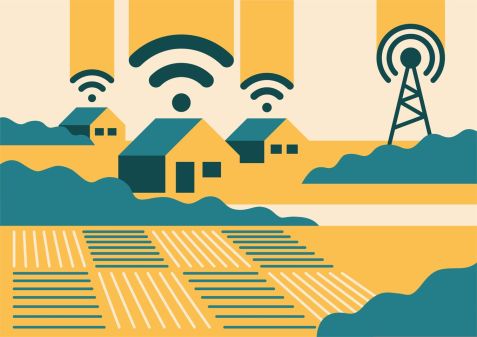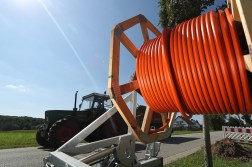Oregon opens broadband office to connect rural residents

Oregon Gov. Kate Brown issued an executive order this week creating a state broadband office, fueled primarily by a desire, officials say, to bring high-speed internet access to rural and low-income areas.
“This is an economic and equity issue,” Gov. Brown said in a press release Wednesday. “Broadband is essential for businesses to grow, and for schools, health care providers, and first responders to deliver the highest quality of service. We will continue to push for policies that help all Oregonians thrive.”
The Oregon Broadband Office, which would contain four or five full-time employees, would be placed inside Business Oregon, the state’s economic development office. The state would spend $1.1 million to fund the office, according to Brown’s proposed budget for the state’s 2019-2021 fiscal cycle.
Spokesmen from the governor’s office told StateScoop the office would essentially serve as a policy and planning hub, responsible for coordinating a statewide strategy and securing funding to ensure everyone in the state has access to high-speed internet. In Oregon, some communities in urban areas have less broadband access than others, but the issue primarily affects rural communities outside of the state’s more populous western cities.
In addition to providing communities with technical assistance and showing them how to secure state resources and apply for federal grants, the office will also manage state funds earmarked for rural broadband expansion.
The governor’s proposed budget currently sets aside $5 million for new rural broadband projects. That figure pales next to next-door Washington’s proposed $25 million, but Brown’s office said Democratic State Rep. Pam Marsh, who led a legislative working group that convinced the governor to create the new office, will develop a strategy to gather more funding and outside investment for expanding the state’s rural broadband networks.
After Washington Gov. Jay Inslee’s proposal for a broadband office, tucked inside his 2019-2022 budget, was made earlier this month, Oregon becomes the 20th state to create a central statewide broadband office.
Each state does things a little bit differently. Some states, like California, Colorado, New Mexico and Maryland, house the broadband office inside the state technology office. Connecticut’s is inside the Office of Consumer Counsel. Wisconsin’s is inside the Public Service Commission.
Oregon placed its new office under economic development — similar to Minnesota, Tennessee and Utah — because it’s better positioned to manage relationships with parties outside government than the state’s technology office, which is oriented around connecting public entities, the Brown’s office said.
Ninety percent of Oregon’s population already has potential access to an internet connection meeting the Federal Communications Commission’s current broadband standard — defined as downloads of 25 megabits per second and uploads of 3 megabits per second — according to Broadband Now, a website that aggregates data on internet providers. But two counties, Wheeler and Wallowa, in northeastern Oregon, have zero high-speed access.
“The digital divide is very real in Eastern Oregon,” Republican State Rep. Lynn Findley, who represents a rural district on the Idaho border, said in a press release.
On top of infrastructure availability, cost of access is also a barrier for some Oregonians. A 2014 report based on findings of a telephone survey conducted by the Oregon Business Development Department and the state Public Utility Commission found that while 87 percent of adult state residents reported using the internet, 60 percent of those who identified as non-internet-users cited cost as a major contributing factor. Internet use was also found to be highly correlated with device ownership, another costly barrier to entry.
Broadband, Marsh said in a press release, is the state’s “greatest economic development tool.”
“The new Broadband Office will take on the critical work of helping unserved and underserved communities with technical assistance and funding expertise necessary to get them online,” she said. “Our goal should be nothing short of 100 percent broadband adoption across the state of Oregon.”






